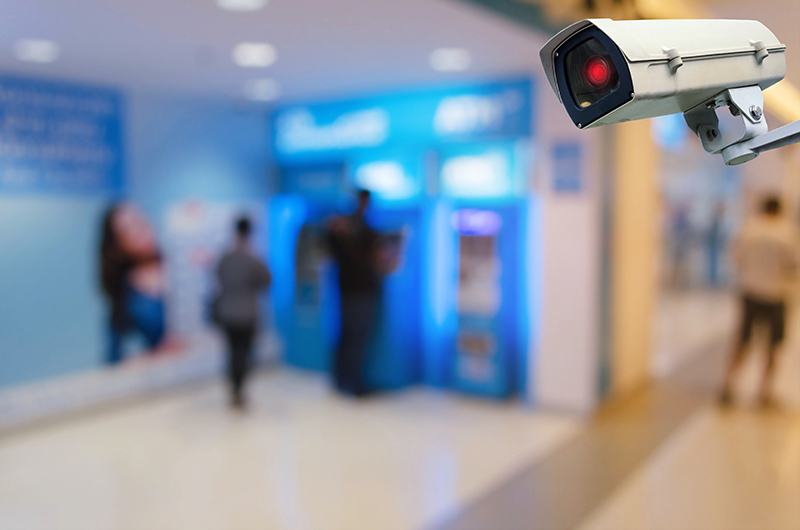How Bank Branches Can Maximize Video Surveillance for Increased Security and Business Intelligence

Video Intelligence Software at Local Bank Branches
Avid readers of the BriefCam blog are well aware of the vast impact artificial intelligence and video analysis is having on a wide range of businesses – from retail to law enforcement, education and healthcare campuses and beyond video intelligence is driving informed decision making, increased security and streamlined operations. For banks that already rely on video surveillance, video analysis is also an important approach for enhancing situational awareness, operational productivity and customer service. Read on to discover how individual bank branches can leverage video content analytics to increase security and derive business intelligence.
From Video Monitoring to AI-Driven Alerts in Real-Time
Hundreds of people enter local bank branches every day, and these financial institutions rely on video surveillance to monitor spaces within the bank buildings, as well the perimeter, including the parking lot and – especially – the automatic teller machines (ATMs) located outside. By enhancing video surveillance with video content analytics, banks can attain full situational awareness without having to dedicate extensive manpower or time to video review.
Bank security needs to be able to respond dynamically to changing conditions and react immediately as situations develop. Video intelligence software enables this by triggering real-time alerts when pre-configured features or behaviors are detected. For instance, it might be helpful to receive a count-based alert when more than a certain number of objects – or a concurrent number of objects – are detected within a specified time frame. With timely alert notifications, the security team can determine whether immediate response is required and react accordingly to situations varying from suspected attempts to commit a crime and emergencies to growing crowds and snaking queues.
Face Recognition for Accelerating Response and Investigation
In compliance with local regulations, a bank might also opt to configure rules based on face recognition, triggering alerts when face matches are detected for persons of interest. For example, a bank might want to receive alerts when theft suspects in local bank robberies are detected at other branches within the area. In this case, security personnel could be deployed to more closely monitor the situation and react immediately to behavior deemed suspicious. By the same token, face recognition could also be used, with customer consent, to provide dedicated and immediate response to VIP customers: When strategic clients enter the bank, they could be recognized with face matching, empowering the bank to quickly deploy staff to immediately engage the customer upon entering the branch.
Even in cases where proactive action is not possible, face recognition and video content analysis can also help banks quickly understand incidents and accelerate investigations. Video footage can be filtered based on faces – leveraging face recognition to identify suspects in video evidence – or other powerful search combinations such as gender, clothing colors and accessories characterizing the people of interest, to focus video search and isolate relevant objects as part of the video review.
Preventing ATM Fraud with Video Analysis
For many banks, video surveillance starts outside the branch building at the ATM. Many banks affix cameras near their ATMs to monitor queues and investigate card skimming – the practice of installing devices that capture cards’ magnetic stripe data and the associated PINs entered, so that fraudsters can counterfeit cards and use them to withdraw money from accounts. Once a customer identifies fraudulent withdrawals and reports them, the bank can leverage video investigation software to review these video recordings and identify card skimmers. When card skimming is reported or suspected, the bank can quickly review hours of footage to identify the card skimmer and detect the suspect throughout video. Moving forward, alerts can also be configured to identify the suspected card skimmer with real-time face recognition alerts – even at other ATMs with video surveillance cameras and video content analysis access. In this way, fraudsters can be apprehended and future card skimming attempts can be quashed.
Streamlining Customer Service at the Bank
As video content is aggregated over time, the metadata can be leveraged and visualized to track trends and drive informed decision-making based on actionable intelligence. For instance, a bank might leverage heatmaps to understand where crowding occurs and to determine the cause. It could be that tellers are taking too long to serve customers and queues are forming, or that there simply aren’t enough tellers during peak hours to serve all the visitors. Perhaps certain building entrances and exits aren’t fully utilized, causing crowding in other areas. For all these possibilities, the bank can devise data-driven solutions based on video content analysis.
While this critical data can have a major impact on individual branches, evaluating the aggregate bank data across all branches can equip the corporate management of large financial institutions to improve performance, operations and security across all its branches – locally, nationally and internationally. The next post in this series will talk about how other financial organizations, such as bank headquarters, national financial institutions, as well as banking critical infrastructures can leverage video intelligence software for to transform video content into actionable intelligence. Stay tuned!